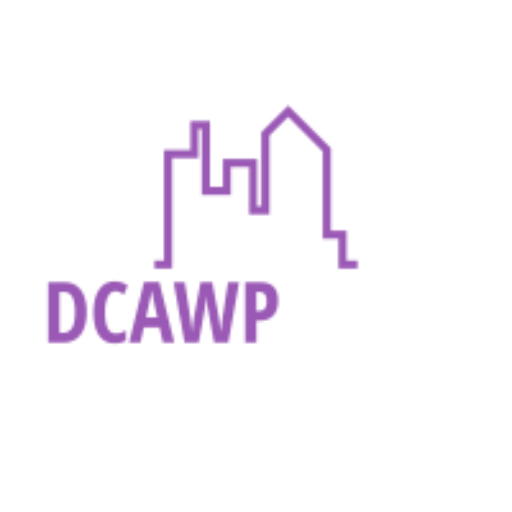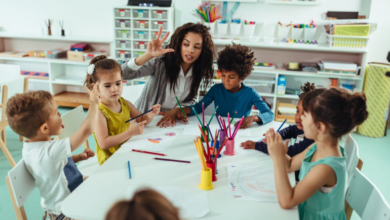Strategies for Effective Curriculum and Instruction in Modern Classrooms

Introduction to the Importance of Curriculum and Instruction
Curriculum and instruction form the bedrock of the educational experience, setting the stage for student success and shaping the trajectory of their academic journey. Beyond transmitting knowledge, a robust educational framework supports cognitive development, encourages curiosity, and fosters a life-long love for learning. Teachers who invest in furthering their qualifications, such as participating in an online masters curriculum and instruction program, are equipped with advanced skills to deliver impactful and relevant education in an ever-changing classroom dynamic.
Despite the necessity for tailored educational experiences, educators face numerous obstacles, from integrating technology to accommodating diverse learning needs and overcoming language barriers. Striking a balance between standardized curriculum requirements and personalized instruction demands skill, creativity, and an in-depth understanding of pedagogical principles. This balancing act is crucial in crafting learning environments that nurture academic proficiency and personal growth.
In today’s rapidly evolving education landscape, the importance of developing a flexible and forward-thinking curriculum has never been greater. Educators must now convey subject matter effectively and instill the competencies necessary for students to thrive in a globalized society. Hence, the demand for comprehensive educational strategies is at an all-time high, fostering the need for educators to refine their practices to meet these modern challenges constantly.
The Pedagogical Shifts in the 21st Century
Digital technology has revolutionized traditional pedagogical paradigms, reshaping the very fabric of education. The roles of students and teachers are being redefined in the digital age, with educators transitioning from dispensers of knowledge to facilitators of learning experiences. This change acknowledges the diverse and active ways students engage with content, driven by the ubiquity of digital devices and the internet.
Contemporary learners expect a participatory, engaging educational experience that integrates seamlessly with their tech-savvy lifestyles. In response, teachers are adopting innovative pedagogies, like the flipped classroom, where instruction happens online, outside of school, followed by interactive, hands-on problem-solving in class. These methods enable a more personalized learning journey, accommodating different paces and styles, and have been linked to improved academic outcomes.
With the backdrop of these shifts, there is a growing consensus on the importance of project-based learning to develop essential skills such as collaboration, communication, and critical reasoning. With these modern pedagogical approaches, resources like Edutopia’s insights on project-based learning offer valuable perspectives on implementing such strategies in the classroom.
Developing a Responsive Curriculum
The need for a culturally responsive and inclusive curriculum resonates across the academic sphere. Educators understand more than ever the importance of recognizing each student’s unique background, learning preferences, and intellectual potential. A responsive curriculum is agile, adapting to societal trends and global events, ensuring that education remains relevant and reflects the broad spectrum of human experiences.
Critical components to developing such a curriculum include robust professional networks and access to contemporary research in educational methodologies. This holistic approach carefully maps instructional strategies to diverse learning outcomes, crafting rich educational tapestries that engage all students equitably.
The responsive curriculum at Northwest Missouri State University embraces the heterogeneity of the classroom, turning the challenge of diverse student bodies into an opportunity for enriched, multifaceted learning experiences. It encourages exposure to various perspectives, promotes empathy and understanding, and equips learners with the ability to excel in an interconnected world. This approach eschews one-size-fits-all solutions for tailored, impactful educational designs that celebrate and leverage the diversity inherent to every learning community.
Innovative Instructional Strategies in Education
The education landscape is rife with possibilities as innovative instructional strategies emerge to meet the demands of the modern classroom. These strategies run the gamut from collaborative workspaces to gamification, each offering a novel way to ignite student imagination and initiative. By embracing a student-centered approach, educators are witnessing a transformation in classroom culture, where learners are empowered to take charge of their educational pathways.
A prime example of these transformative methods is the use of in-class games and interactive simulations. Such active learning practices engage students in a dynamic process, enhancing their understanding of the subject matter through hands-on application. Similarly, integrating storytelling techniques can immerse students in the content, creating a narrative context that fosters deeper emotional and intellectual connections.
Amid this exploration of innovative instructional strategies, teachers must reflect on and adapt practices to best suit their students’ development. Continuous evaluation and adjustments are integral components of any practical instructional framework. Cultivating a feedback-rich environment supports this cyclical improvement process, laying the groundwork for enduring, positive outcomes in student learning.
Integrating Technology into Teaching and Learning
In the 21st-century classroom, educational technology is a cornerstone of engaging and practical curriculum design. Emerging tools, such as learning management systems and interactive software, provide educators unprecedented opportunities to tailor their instructional approach to individual student needs. This integration enhances student-teacher interaction and offers real-time feedback and analytics to inform pedagogical decisions.
Despite the bells and whistles of new tech offerings, the accurate measure of successful technology integration lies in its impact on student learning and engagement. Progressive educators employ various tools, like EdTech apps that gamify mathematics or virtual reality experiences that transport students to historical battlefields or distant planets, igniting curiosity and enthusiasm for learning.
These leading-edge resources, however, should not overshadow the importance of thoughtful implementation. Educators must navigate the challenges of incorporating technology in a manner that complements, rather than dominates, the learning objectives. Whether enhancing existing curricula or pioneering new teaching models, the role of technology in education represents a balanced marriage of innovation, practicality, and pedagogical soundness.
Emphasizing Critical Thinking and Problem-Solving Skills
The modern education domain underscores the role of critical thinking and problem-solving as essential elements of a well-rounded curriculum. Forging opportunities for students to analyze, synthesize, and evaluate information prepares them to navigate complex real-world issues. Embedding such critical thinking exercises within the curriculum is not a mere augmentation; it’s an essential shift toward nurturing self-sufficient and discerning individuals.
Facilitating classroom environments that challenge students to question assumptions and consider multiple perspectives is fundamental. Inquiry-based learning initiatives and robust dialogue-rich activities encourage students to think deeply and articulate their reasoning. These capacities are not just academic virtues but are vital for students’ success beyond school walls, making them highly valued in the workforce and society.
The assessment of critical thinking and problem-solving also demands attention, as traditional testing methods may need to capture students’ capabilities in these areas adequately. Alternative assessment techniques considering process-oriented tasks, such as portfolios and performance-based evaluations, offer a clearer picture of a student’s analytical prowess. This comprehensive approach ensures that the cultivation of critical competencies remains a central focus of effective educational practices.
Collaboration and Interdisciplinary Approaches
Education in the contemporary era is witnessing a paradigm shift toward cooperative learning and interdisciplinary curriculum. The amalgamation of different disciplines brings about a holistic learning perspective, breaking down traditional silos and fostering a broader comprehension of complex concepts. Collaborative projects, whether in-person or through online platforms, expound on the synergistic potential of group work, developing essential social skills and collective problem-solving abilities.
These interdisciplinary and cooperative experiences also mirror the complexity of our globalized world, where challenges are multifaceted, and solutions require contributions from diverse fields of knowledge. By engaging with interdisciplinary projects, students appreciate the interconnectedness of subjects, from the sciences to the humanities, and understand how this integration can forge innovative paths to problem resolution.
Educators play a pivotal role in orchestrating these collaborative ventures, curating experiences that leverage the strengths and interests of each student. The art of education thus expands, encompassing not only the transmission of knowledge but also the cultivation of shared learning experiences that unite disparate areas of expertise in service of common educational goals.




